cbse notes for class 10th science || Notes class-10th science chapter-6
Chapter-6 Science notes life Processes
•All living things perform certain life processes like growth, excretion, respiration, circulation etc.
•All the processes like respiration, digestion, which together keep the living organisms alive and perform the job of body maintenance are called life Processes.
Example
Life Processes
-Growth
-Digestion
-Respiration
-Circulation
-Excretion
I. Nutrition
(The whole process by which an organism obtain it's food)
Nutrition in plants
•Plants are autographs.
•can make their own food.
Nutrition in Animals
•Animals are hetrotrophs.
•Depends on plants or other animals for their food.
Mode of Nutrition
Autrotrophic
This kind of nutrition in which inorganic material like Co², water etc.are utilised to prepare organic food by the process of photosynthesis.
E.g green plants.
Hetrotrophic
This kind of nutrition in which organisms do not possess the ability to synthesize their own food.They depend on autograph for their supply directly or indirectly.
E.g Animals, fungi.
Autotrophic Nutrition :-
The organisms which carryout auto trophic nutrition are called autographs (green plants)
Autotrophic nutrition is the process by which autotrophs take in Co² and H²0 and convert these into carbohydrates in the presence of chlorophyll, sunlight is called photosynthesis.
Equation:
6Co²+12H²0 sunlight
—————
Chlorophll
C6H¹²06+60²+6H²0
Raw Material for photosynthesis :
•Sunlight
•chlorophyll→sunlight absorbed by chlorophyll
•Co²→Enter through stomata and oxygen (O²) is released as by -product through stomata on leaf.
•water→water +dissolved minerals like nitrogen , phosphorus etc.are taken up by the roots of the soil.
Site of photosynthesis:
Chloroplast in the leaf, chloroplast Contain chlorophll (green pigment).
Main Events of photosynthesis:
•Absorption of light energy by chlorophyll.
•Converstion of light energy into chemical energy +splitting (breaking)of water into hydrogen and oxygen.
•Reduction of Co² to Carbohydrates.
•Stomata:They pores present on the surface of the leaves.
Functions:
(a)Exchange of gases O²/Co².
(b)loses large amount of water (water vapour) during transpiration.
Holozoic
Animals take in solid food and breakdown inside the body .Eg-Amoeba, Animals
Saprophytic
Organisms food on dead , decaying matter .For E.g Fungi.
Parasitic
Parasites live inside or outside other organism(host) and derive nutrition from it.Eg, Cuscuta(plant parasites), tricks etc.
How do organisms obtain their Food
Unicellular/single called organisms:Food is taken up through entire surface.
Example (I)Amoeba
(II)Paramaecium
(I)Amoeba→→Pseudopodia
(Extension of cell membrane)
↓
Capture Food
↓
Take in |Food vacuole|
↓
Digestion of food in food vacuole
(Diffusion of simple substances in cytoplasm)
↓
Undigested food
↓
Move to surface of cell and is thrown out.
(II)Paramaecium
Paramaecium→Cilia→Take in food→At a specific spot
(Present all over the body)
I Nutrition
Nutrition
Ingestion:-Intake of food
Digestion:-Breakdown of complex material into simple ones.
Absorption:- Movement of digested food.
Assimilation:- Utilisation of food.
Egestion:- Removal of waste products.
Different organisms utilize different nutritional processes as it depends upon the source of carbon from where the food in taken.
Nutrition in Human Beings
1.Mouth →Intake of whole food.
•Teeth→Chewing /grinding of food.
•Tongue→Rolling of food +
Tasting of food+
•Swallowing/Pushing down of the food.
Salivary glands→Secrete saliva +Mucus
Starch Salivay Sugar
————›
Amylase
(Saliva)
2.Oesophagus→Taking food from mouth to stomach by Peristaltic movement.[contraction and expansion of muscles of the Oesophagus]
3.Stomach →gastric glands secrete → gastric juice
Gastric Juice
Pepsin: Enzyme that breakdown proteins.
HCl: Make medium acidic
Mucus: Protects inner lining of the stomach.
4.Small intestine→(a)Intestinal enzyme
↓ convert
|––––––––––––––––|–––––––––––––––––|
Carbohydrate Fats Proteins
Glucose fatty acid+Glycerol Amino Acids
5.Small Intestine→(b)villi
-finger like projections
-Help in absorption of food into the blood
(C) Receives secretion
•liver-Bile large fat Emulsification
Emulsification:-The bile salts help in the breakdown of fat into smaller globules thus, increasing the efficiency of enzyme action, a process called Emulsification.
•Globules→globules
•Pancreatic Juice
↓------------------------------------------------↓
Trypsin lipase
↓ |
|
Proteins→Peptones
↓
Fat→→→→→lipids
6.large Intestine →Absorb excess of water
→The rest of the material is removed from the body via the anus.
Respiration
Respiration involves:-(i)Gaseous exchange:Intake of oxygen from the atmosphere and release of Co²→Breathing
(ii) Breakdown of simple food in order to release energy inside the cell→cellular respiration
Breakdown of glucose by various pathways
Aerobic
•Takes place in the presence of oxygen
•Occurs in mitochondia .
•End product are Co² and H²0.
•More amount of energy is released.
Anaerobic
•Take place in the absence of oxygen.
•Occurs in cytoplasma.
•End products are alcohol or lactic acid.
•less amount of energy is released.
Human Respiratory system
Passage of air through the respiratory system.
Nostril
↓
Nasal Passage
↓
Nasal cavity
↓
Pharynx
↓
larynx
↓
Trachea
↓
| Bronchi. |
↓
| Bronchioles |
↓
| Alveoli |
↓
| Blood capillaries |
____________________
Lungs
Mechanisms of Breathing
Inhalation
•During inhalation the thoracic cavity ([chest cavity]) expands.
•Ribs left up.
•Diaphragm become flat in shape.
•Volume of lungs increases and air enters the lungs.
Exhalation
•Thoracic cavity contracts.
•Ribs move downwards.
•Diaphragm becomes dome shaped.
•Volume of lungs decreases and air exits from the lungs.
Exchange of gases between alveolus, blood and tissues
(1)Air (rich in O²)→Blood →Binds with haemoglobin in RBC→0² is released in (in alveolus) (through blood vessels) tissues.
(2)Co²→Released in blood →Dissolved in blood→Blood vessels→Released in alveolar sac→send out through nostrils
(From tissue) (in alveoli)
Terrestrial organisms:Use atmosphere oxygen for respiration.
Aquatic organisms:Use dissolved oxygen for respiration.
Respiration in Plants
Respiration in plants is simpler than the respiration in animals.Gaseous exchange occur through:
(a)stomata in leaves.
(b)lenticels in stems.
(c)General surface of the root.
Transportation
Human beings like other multicellular organism need regular supply of food Oxygen etc.This function is performed by circulatory system.
The circulatory system in human beings consists of
Heart : A pumping organ
Arteries and veins: Blood vessels
Blood and lymph: A circulatory medium.
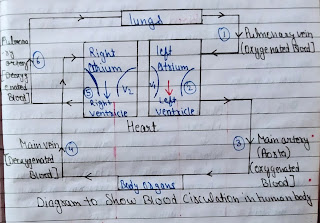 |
| Flow chart |
Double circulation
Blood travels twice through the heart in one complete cycle of the body.
Direction of blood flow through human heart
→Pulmonary circulation:Blood moves from the heart to the lungs and back to the heart.
→Systemic Circulation:Blood moves from the heart to rest of the body and back to the heart.
Blood(A fluid connective tissue)
↓
↓—————————————————↓
Solidcompnent liquid component Blood corpuscles Plasma
Solid component blood corpuscles
R.B.C.s
→Carries gas, (o², Co²)
→Contain HB, impart red colour to the blood.
Blood platelets:Helps in blood clotting.
W.B.C
→Provide body defence by emgulfing the germs and producing anti bodies.
Liquid component plasma
→A yellow colour fluid contain 90℅ water and 10℅ organic substances like-plasma, proteins viz.Albumin, globulin, inorganic-mineral ions.
Lymph:A yellowish fluid escapes from the blood capillaries into the intercellular spaces contain less protein than blood lymph flows fromm the tissues to the heart assisting in transportation and destroying germs.
Capillaries
Capillaries are microscopic vessels about 8 microns (8cm) in diameter.There are link between artery and vein.They carry blood from arteries to small veins or venules .The wall of capillaries us formed of a single layer of endothelial cells.These lie in contact with the body tissues.
Differences among Arteries, veins and capillaries
Arteries
•Thick, Muscular and elastic.
•Narrow.
•lumen is not provided with valves.
•Carry blood from heart to body parts.
•Blood flows with jerks, high pressure and speed.
•carry oxygenated blood(except pulmonary artery).
•Deep seated.
Veins
•Thin , less elastic
•wide.
•lumen is provided with valves which prevent backward flow of blood.
•Carry blood from body parts to heart.
•Blood flows smoothly with low pressure and speed.
•Carry deoxygenated blood(except pulmonary vein).
•Comparatively superficial in position.
Capillaries
•very thin , formed of single layer of endothelial cells.
•very narrow.
•Valves are absent.
•Blood flows from arteries to venules.
•Blood flows smoothly at very low pressure.
•carry oxygenated blood at arteriole end and deoxygenated blood at venule end .
•lie in contact with the body tissues and form network throughout body.
Transportation in plants
Transport system in plants is simple.Plants do not move .They have large proportion of dead cells in many tissues.Therefore , the energy needs of plants is much less than in animals.They have much simple and slow transport system.
•There are two main independent transport system to conducting pathways in a plants.
Xylem:A system to absorb and transport water and minerals from roots to leaves called xylem transport.
Phloem:A system to distribute food from leaves to all parts of plant called phloem transport.
Transpiration:Transpiration is the process of loss of water as vapour from aerial parts of the plant.
Function:
(a)Absorption and upward movement of water and minerals by creating Pull.
(b)Help in temperature regulation in plant.
• Transport of food from leaves (food factory )to different part of the plant is called Translocation.
Excretory system in Men
Excretory /urinary system consists of:
(1)The kidneys :The excretory organ
(2)The Ureters :The ducts which drain our urine from the kidneys.
(3)The urinary bladder:The urinary reservoir .
(4)The Uretha :The channel to the exterior.
Excretion
1.The metabolic activities in the body generates many kinds of wastes including nitrogenous wastes which are harmful for the body and hence needed to be removed .Excretion is a process by which these wastes are removed form our body.
2.Unicellular organisms remove these wastes by simplee diffusion.
Human Excretory system
Formation of Urine
•Each kidney contains many filtration units called as neurons.
•Nephrons are made up of a cluster of thin walled capillaries called glomerulus which is associated with a cup like structure called as Bowman's capsule and the long tube which terminated through this capsule.
•The renel artery brings oxygenated blood to the kidneys along with the nitrogenous wastes like urea and uric acid and many other substances.
•The blood gets filtered through the glumerulus and this filtrate enters the tubular part of nephron.
•As this filtrate moves down the tubular part, glucose, amino acids, salts and excess of water gets selectively reabsorbed by the blood vessels surrounding these tubules.
•The amount of water reabsorbed depends upon:
→How much excess of water is there in the body and
→How much nitrogenous wastes need to be excreted out.
•So the fluid now flowing in the tubular part is urine which gets collected in collecting ducts of nephrons.
•These collecting ducts together leave the kidney at a common point by forming the ureter.
•Each ureter drains the urine in the urinary bladder where it is stored until the pressure of expanded bladder leads to an urge to pass it out through urethra.
•This bladder is a muscular structure which is under nervous control.
•180 liters of filtrate is formed daily but only 2 liters is excreted out as urine so the rest is reabsorbed in the body.
Excretion in Plants
Plants use different strategies for excretion of different products:
•Oxygen and carbon dioxide is diffused through stomata.
•Excess water is removed by transpiration.
•Plants can even loose some of their old parts like old leaves and bark of tree.
•Other waste products like raisins and gums especially in old Xylem cells which can also be lost by plants .
•Plants also secrete some waste substances into the soil around them.
Functions of Nephron
•Excretion of nitrogenous wastes.
•To maintain the water and ionic balance( osmic regulation).
The urine Formation involves three steps:
1.Glomerular Filtration:Nitrogenous wastes , glucose water, amino acid filler from the blood into Bowman capsule of the nephron.
2.Tubular reabsorption:Now , useful substances from the Filtrate are absorption back by capillaries surrounding the nephron.
3.Secretion:Urea, extra water and salts are secreted into the tuble which open up into the collecting duct and then into the ureter.
Artificial kidney
Hemodialysis:The process of purifying blood by an artificial kidney.It is meant for kidney failure patients.




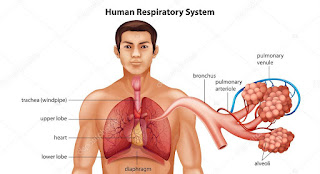








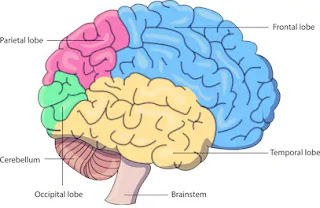


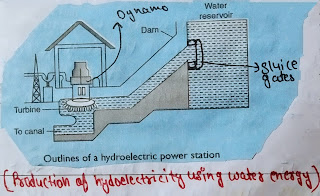

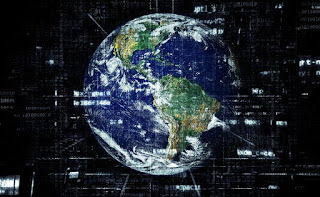
Comments
Post a Comment
Use the respectfully words in comment box.